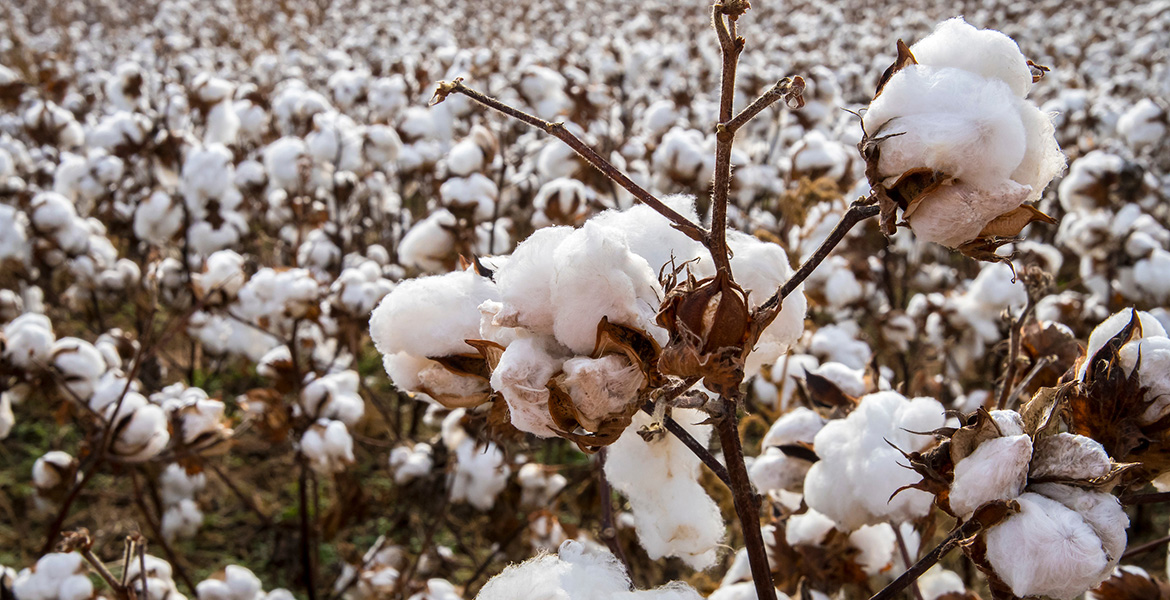
Cotton producers managing 2,4-D and other auxin herbicide concerns
Monday, June 25, 2018
Oklahoma producers are once again dealing with crop and plant injury, drift and volatility issues related to auxin herbicides such as 2,4-D and dicamba.
Essentially, any broadleaf plant is sensitive to varying degrees to these herbicides, said Todd Baughman, Oklahoma State University Cooperative Extension summer crop weed specialist.
“This has occurred basically every year since auxin herbicides were developed, the primary two being 2,4-D and dicamba,” Baughman said. “Tomatoes, okra and grapes are going to be extremely susceptible to those herbicides, trees and bushes to a lesser degree, but still sensitive.”
In cases of suspected injury, the best way to manage the symptoms is to keep plants adequately watered and fertilized.
“Depending upon how much gets on that individual plant is going to affect how it recovers,” Baughman said. “One key is probably putting out a rain gauge. In many cases, people think they’re watering much more than they are, so making sure, especially with the dry conditions we’ve had recently, plants are well watered, that will help the recovery as much as anything.”
Meanwhile, Seth Byrd, OSU Cooperative Extension cotton specialist, advised producers to be aware of the crops being grown in nearby fields, the product being used and the conditions under which they are applied.
“I’ve found the best method to be neighbors talking to neighbors and finding out what’s across the turn row from them. If it’s a different technology, then make sure that’s a key consideration when you’re spraying,” Bryd said. “You’ve got to think about what’s beside you and, in some cases, you need to think about two fields over, what’s on all sides, where’s the wind blowing and what time of day is it.”
It is important for producers to keep in mind, too, that 2,4-D tolerant, or Enlist, cotton is only tolerant to 2,4-D and not other auxins. Likewise, dicamba tolerant, or Xtend, cotton, is only tolerant to dicamba.
“While 2,4-D and dicamba are both auxin herbicides, the specific active ingredients aren’t the same,” Byrd said. “This also goes for other auxin herbicides that may be commonly found mixed together in products used on pasture or rangeland.”
Byrd said an increase in 2,4-D tolerant cotton acres compared to 2017 and cotton being planted in areas where it has not been traditionally cultivated has contributed to the special attention being paid to auxin herbicides this year.
Efforts to make these auxins safer, but just as effective, are ongoing. The newest formulations of 2,4-D and dicamba are designed to minimize volatility issues compared to older formulations, while strict label restrictions governing application methods, equipment and conditions under which they can be applied are targeting drift.
These new formulations are, in fact, the only formulations that can be applied to the Enlist or Xtend cotton technologies.
“We’re well aware there’s a lot of eyes on this and there’s a lot of pressure to get this right. The agricultural community is doing what we can to make sure we’re doing this right and we’re good stewards of the technology,” Byrd said. “I know for sure, I’ve talked to enough producers, they’re as invested or more invested than any of us in terms of getting it right.”
The Oklahoma Department of Agriculture, Food and Forestry regulates pesticides and herbicides in the state. All complaints should be filed with ODAFF’s Mike Vandeventer by email, fax or mail at mike.vandeventer@ag.ok.gov, 405-522-0625 (fax) or 2800 N. Lincoln Boulevard, Oklahoma City, Oklahoma 73105.
For more information about proper use of cotton herbicide technologies, contact the nearest county Extension office and download a free OSU Fact Sheet on the topic, L-465, “New Soybean and Cotton Herbicide Technology Considerations” at facts.okstate.edu.
Story by Leilana McKindra
